Practice with the help of Spectrum Math Grade 5 Answer Key Chapter 1-5 Mid Test regularly and improve your accuracy in solving questions.
Spectrum Math Grade 5 Chapter 1-5 Mid Test Answers Key
Add, Subtract, multiply, or divide
Question 1.
a.

Answer:
275×56 = 15,400.
Explanation:
By multiplying 275 and 56 we will get the product as 15,400.
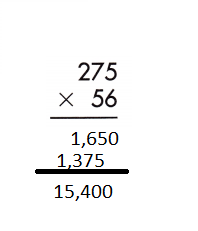
b.

Answer:
312×9 = 2,808.
Explanation:
By multiplying 312 and 9 we will get the product as 2,808.
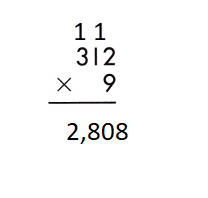
c.

Answer:
1717×34 = 58,378.
Explanation:
By multiplying 1717 and 34 we will get the product as 58,378.
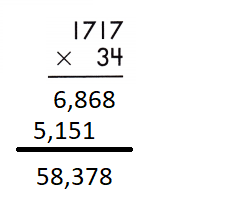
d.

Answer:
5806×42 = 243,852.
Explanation:
By multiplying 5806 and 42 we will get the product as 243,852.
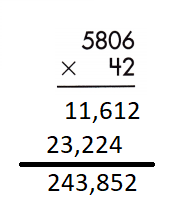
Question 2.
a.
![]()
Answer:
72÷8 = 9.
Explanation:
The division of 72 by 8 we will get the result as 8.
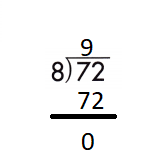
b.
![]()
Answer:
384÷19 = 20.21.
Explanation:
The division of 384 by 19 we will get the result as 20.21.
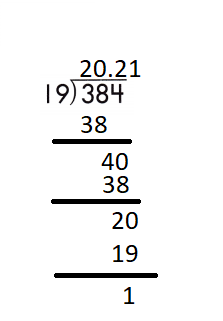
c.
![]()
Answer:
6147÷52 = 118
Explanation:
The division of 6147 by 52 we will get the result as 118.
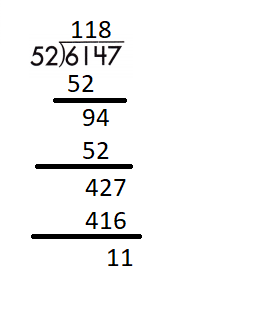
d.
![]()
Answer:
1352÷8 = 169.
Explanation:
The division of 1352 by 8 we will get the result as 169.
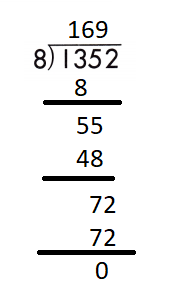
Question 3.
a.

Answer:
5.73+0.21+1.6 = 7.54.
Explanation:
The addition of 5.73, 0.21 and 1.6 we will get the result as 7.54.
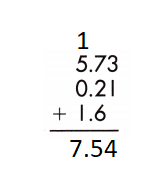
b.

Answer:
28.30+1.07+5.58 = 34.95.
Explanation:
The addition of 28.30, 1.07 and 5.58 we will get the result as 34.95.
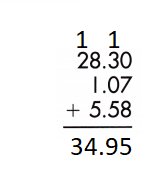
c.

Answer:
93.45+28.12+23.3 = 144.87.
Explanation:
The addition of 93.45, 28.12 and 23.3 we will get the result as 144.87.
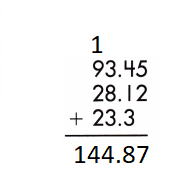
d.

Answer:
Explanation:
The addition of 27.38, 92.46 and 84.9 we will get the result as 204.74.
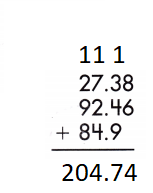
Question 4.
a.

Answer:
42.5-16.30 = 26.20.
Explanation:
By subtracting 16.30 from 42.5 we will get the result as 26.20.
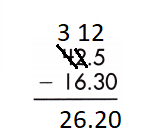
b.

Answer:
7.28-0.95 = 6.33.
Explanation:
By subtracting 0.95 from 7.28 we will get the result as 6.33.
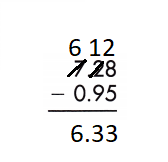
c.

Answer:
74.27-2.56 = 71.71.
Explanation:
By subtracting 2.56 from 74.27 we will get the result as 71.71.
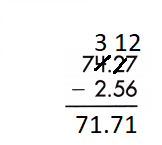
d.

Answer:
32.56-23.65 = 8.91.
Explanation:
By subtracting 23.65 from 32.56 we will get the result as 8.91.
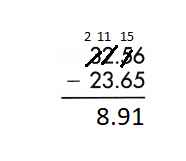
Question 5.
a.

Answer:
586×3.7 = 2168.2
Explanation:
By multiplying 586 and 3.7 we will get the product as 2168.2.
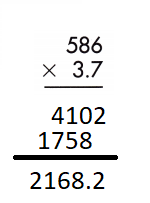
b.

Answer:
2.1×0.8 = 1.68.
Explanation:
By multiplying 2.1 and 0.8 we will get the product as 1.68.
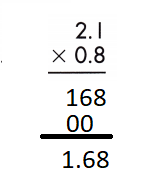
c.

Answer:
3.50×2.6 = 9.1
Explanation:
By multiplying 3.50 and 2.6 we will get the product as 9.1.
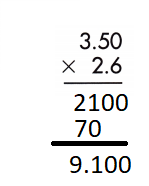
d.

Answer:
38.2×7.58 = 289.556.
Explanation:
By multiplying 38.2 and 7.58 we will get the product as 289.556.
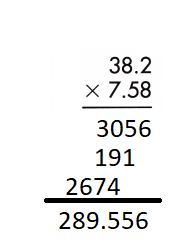
Multiply or Divide.
Question 6.
a.

Answer:
98×0.4 = 39.2.
Explanation:
By multiplying 98 and 0.4 we will get the product as 39.2.
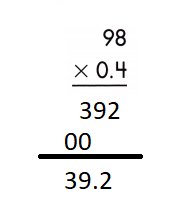
b.

Answer:
370×6.4 = 2368.0
Explanation:
By multiplying 370 and 6.4 we will get the product as 2368.0
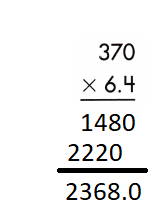
c.

Answer:
7.02×9 = 63.18.
Explanation:
By multiplying 7.02 and 9 we will get the product as 63.18.
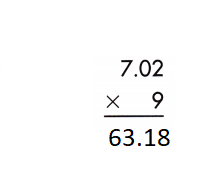
d.

Answer:
42.36×13 = 550.68.
Explanation:
By multiplying 42.36 and 13 we will get the product as 550.68.
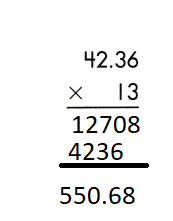
Question 7.
a.
![]()
Answer:
10÷2.5 = 4.
Explanation:
The division of 10 by 2.5 we will get the result as 4.
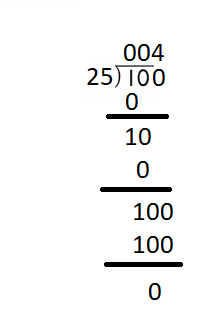
b.
![]()
Answer:
36÷0.03 = 1200.
Explanation:
The division of 36 by 0.03 we will get the result as 1200.
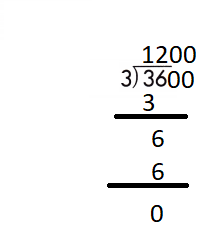
c.
![]()
Answer:
7.2÷9 = 0.8.
Explanation:
The division of 7.2 by 9 we will get the result as 0.8.
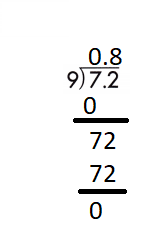
d.
![]()
Answer:
5.6÷8 = 0.7.
Explanation:
The division of 5.6 by 8 we will get the result as 0.7.
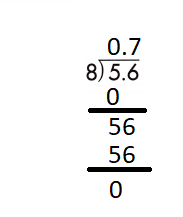
Question 8.
a.
![]()
Answer:
24.96÷4.8 = 5.2.
Explanation:
The division of 24.96 by 4.8 we will get the result as 5.2
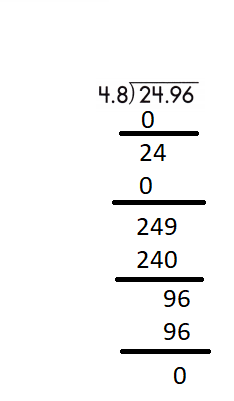
b.
![]()
Answer:
2.96÷0.37 = 8.
Explanation:
The division of 2.96 by 0.37 we will get the result as 8.
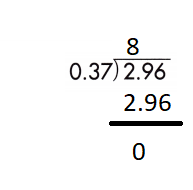
c.
![]()
Answer:
63.42÷9.06 = 7.
Explanation:
The division of 63.42 by 9.06 we will get the result as 7.
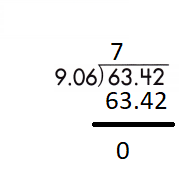
d.
![]()
Answer:
4.84÷1.21 = 4.
Explanation:
The division of 4.84 by 1.21 we will get the quotient as 4.
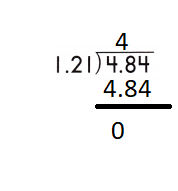
Write each number in expanded form.
Question 9.
a. 732
______
Answer:
732 = 700+30+2
Explanation:
The expanded form of 732 which is 700+30+2.
b. 32,132
______
Answer:
32,132 = 30,000+2,000+100+30+2.
Explanation:
The expanded form of 32,132 which is 30,000+2,000+100+30+2.
c. 4,790
______
Answer:
4,790 = 4000+700+90.
Explanation:
The expanded form of 4,790 which is 4,000+700+90.
Question 10.
a. 10.03
______
Answer:
10.03 = 10+0.3.
Explanation:
The expanded form of 10.03 which is 10+0.3
b. 23,147.32
______
Answer:
23,147.32 = 20,000+3,000+100+40+7+0.3+0.02.
Explanation:
The expanded form of 23,147.32 which is 20,000+3,000+100+40+7+0.3+0.02
c. 300.1
______
Answer:
300.1= 300+0.1
Explanation:
The expanded form of 300.1 which is 300+0.1
What is the value of the underlined digit?
Question 11.
a. 1539.16
Answer:
3 – Tens place.
Explanation:
Here, the underlined digit is 3, so the value of the digit 3 is Tens place.
b. 898,792
Answer:
898,792 = Ten Thousands.
Explanation:
Here, the underlined digit is 9 in 898,792, so the value of the digit 9 is Ten Thousands place.
c. 35,563.8
Answer:
35,563.8 = Thousands.
Explanation:
Here, the underlined digit is 5 in 35,563.8, so the value of the digit 5 is Thousands place.
Question 12.
a. 3,324,291.4
Answer:
3 = Million.
Explanation:
Here, the underlined digit is 3 in 3,324,291.4, so the value of the digit 3 is million place.
b. 8,524.14
Answer:
.04 = Hundredths.
Explanation:
Here, the underlined digit is .04 in 8,524.14, so the value of the digit .04 is hundredths.
c. 82,917.2
Answer:
.2= Hundredths.
Explanation:
Here, the underlined digit is .2 in 82,917.2, so the value of the digit .2 is hundredths.
Add or Subtract.
Question 13.
a.

Answer:
\(\frac{3}{4}\)+\(\frac{1}{4}\) = 1.
Explanation:
The addition of \(\frac{3}{4}\)+\(\frac{1}{4}\) is \(\frac{4}{4}\) which is 1.

b.

Answer:
\(\frac{2}{7}\)+\(\frac{3}{5}\) = \(\frac{31}{35}\).
Explanation:
The addition of \(\frac{2}{7}\)+\(\frac{3}{5}\) which is \(\frac{10+21}{35}\)
= \(\frac{31}{35}\).

c.

Answer:
\(\frac{7}{8}\)+\(\frac{1}{3}\) = \(\frac{29}{24}\).
Explanation:
The addition of \(\frac{7}{8}\)+\(\frac{1}{3}\) which is \(\frac{21+8}{24}\)
= \(\frac{29}{24}\).

d.

Answer:
5+\(\frac{2}{3}\) = \(\frac{17}{3}\).
Explanation:
The addition of 5+\(\frac{2}{3}\) which is \(\frac{15+2}{3}\)
= \(\frac{17}{3}\).

Question 14.
a.

Answer:
\(\frac{5}{8}\)–\(\frac{1}{8}\) = \(\frac{1}{2}\).
Explanation:
The subtraction of \(\frac{5}{8}\)–\(\frac{1}{8}\) which is \(\frac{5-1}{8}\)
= \(\frac{4}{8}\)
= \(\frac{1}{2}\).

b.

Answer:
\(\frac{6}{9}\)–\(\frac{2}{3}\) = 0.
Explanation:
The subtraction of \(\frac{6}{9}\)–\(\frac{2}{3}\) which is
= \(\frac{18-18}{9}\)
= 0.

c.

Answer:
\(\frac{10}{11}\)–\(\frac{4}{5}\) = \(\frac{6}{55}\).
Explanation:
The subtraction of \(\frac{10}{11}\)–\(\frac{4}{5}\) which is
= \(\frac{50-44}{55}\)
= \(\frac{6}{55}\).

d.

Answer:
7-\(\frac{3}{4}\) = 6\(\frac{1}{4}\).
Explanation:
The subtraction of 7-\(\frac{3}{4}\) which is
= \(\frac{28-3}{4}\)
= \(\frac{25}{4}\)
= 6\(\frac{1}{4}\).

Question 15.
a.
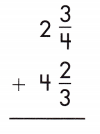
Answer:
2\(\frac{3}{4}\)+4\(\frac{2}{3}\) = 8\(\frac{1}{12}\).
Explanation:
The addition of 2\(\frac{3}{4}\)+4\(\frac{2}{3}\) which is
= \(\frac{11}{4}\)+\(\frac{14}{3}\)
= \(\frac{33+64}{12}\)
= \(\frac{97}{12}\)
= 8\(\frac{1}{12}\).

b.

Answer:
8\(\frac{1}{3}\)+8\(\frac{5}{7}\) = 17\(\frac{1}{21}\).
Explanation:
The addition of 8\(\frac{1}{3}\)+8\(\frac{5}{7}\) which is
= \(\frac{25}{3}\)+\(\frac{61}{7}\)
= \(\frac{175+183}{21}\)
= \(\frac{358}{21}\)
= 17\(\frac{1}{21}\).

c.

Answer:
2\(\frac{5}{8}\)+9\(\frac{3}{4}\) = 12\(\frac{3}{8}\).
Explanation:
The addition of 2\(\frac{5}{8}\)+9\(\frac{3}{4}\) which is
= \(\frac{21}{8}\)+\(\frac{39}{4}\)
= \(\frac{84+312}{32}\)
= \(\frac{396}{32}\)
= 12\(\frac{12}{32}\)
= 12\(\frac{3}{8}\).
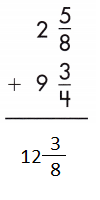
d.

Answer:
2\(\frac{5}{6}\)+1\(\frac{1}{8}\) = 3\(\frac{23}{24}\).
Explanation:
The addition of 2\(\frac{5}{6}\)+1\(\frac{1}{8}\) which is
= \(\frac{17}{6}\)+\(\frac{9}{8}\)
= \(\frac{136+54}{48}\)
= \(\frac{190}{48}\)
= \(\frac{1}{48}\)
= 3\(\frac{46}{48}\)
= 3\(\frac{23}{24}\).

Question 16.
a.
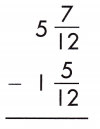
Answer:
5\(\frac{7}{12}\)-1\(\frac{5}{12}\) = 4\(\frac{1}{6}\).
Explanation:
The subtraction of 5\(\frac{7}{12}\)-1\(\frac{5}{12}\) which is
= \(\frac{67}{12}\)–\(\frac{17}{12}\)
= \(\frac{67-17}{12}\)
= \(\frac{50}{12}\)
= 4\(\frac{2}{12}\)
= 4\(\frac{1}{6}\).

b.

Answer:
7\(\frac{1}{4}\)-3\(\frac{2}{9}\) = 4\(\frac{1}{36}\).
Explanation:
The subtraction of 7\(\frac{1}{4}\)-3\(\frac{2}{9}\) which is
= \(\frac{29}{4}\)–\(\frac{29}{9}\)
= \(\frac{261-116}{36}\)
= \(\frac{145}{36}\)
= 4\(\frac{1}{36}\).

c.
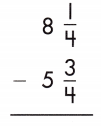
Answer:
8\(\frac{1}{4}\)-5\(\frac{3}{4}\) = 2\(\frac{1}{2}\).
Explanation:
The subtraction of 8\(\frac{1}{4}\)-5\(\frac{3}{4}\) which is
= \(\frac{33}{4}\)–\(\frac{23}{4}\)
= \(\frac{33-23}{4}\)
= \(\frac{10}{4}\)
= 2\(\frac{2}{4}\)
= 2\(\frac{1}{2}\).

d.

Answer:
8\(\frac{1}{3}\)-3\(\frac{1}{2}\) = 4\(\frac{5}{6}\).
Explanation:
The subtraction of 8\(\frac{1}{3}\)-3\(\frac{1}{2}\) which is \(\frac{25}{3}\)–\(\frac{7}{2}\)
= \(\frac{50-21}{6}\)
= \(\frac{29}{6}\)
= 4\(\frac{5}{6}\).

Simplify each of the following.
Question 17.
a. \(\frac{18}{20}\) _____
Answer:
\(\frac{9}{10}\).
Explanation:
The simplest form of \(\frac{18}{20}\) is \(\frac{9}{10}\) as the both numbers are divisible by 2. So we will divide them with 2.
b. \(\frac{28}{35}\) _____
Answer:
\(\frac{4}{5}\).
Explanation:
The simplest form of \(\frac{28}{35}\) is \(\frac{4}{5}\) as the both numbers are divisible by 7. So we will divide them with 7.
c. 2\(\frac{2}{12}\) _____
Answer:
2\(\frac{1}{6}\)
Explanation:
The simplest form of 2\(\frac{2}{12}\) which is \(\frac{26}{12}\) = \(\frac{13}{6}\) which is 2\(\frac{1}{6}\) as the both numbers are divisible by 2. So we will divide them with 2.
Question 18.
a. 3\(\frac{4}{6}\) _____
Answer:
3\(\frac{2}{3}\).
Explanation:
The simplest form of 3\(\frac{4}{6}\) which is \(\frac{22}{6}\) as the both numbers are divisible by 2. So we will divide them with 2. Then \(\frac{11}{3}\) which is 3\(\frac{2}{3}\).
b. \(\frac{51}{6}\) _____
Answer:
8\(\frac{1}{2}\).
Explanation:
The simplest form of \(\frac{51}{6}\) is \(\frac{17}{2}\) as the both numbers are divisible by 3. So we will divide them with 3. Then 8\(\frac{1}{2}\).
c. 7\(\frac{8}{12}\) _____
Answer:
7\(\frac{2}{3}\).
Explanation:
The simplest form of 7\(\frac{8}{12}\) which is \(\frac{92}{12}\) as the both numbers are divisible by 4. So we will divide them with 4. Then \(\frac{23}{3}\) which is 7\(\frac{2}{3}\).
Write each improper fraction as a mixed number in simplest form.
Question 19.
a. \(\frac{18}{8}\) _____
Answer:
2\(\frac{1}{4}\).
Explanation:
The mixed fraction of \(\frac{18}{8}\) is 2\(\frac{2}{8}\) which is 2\(\frac{1}{4}\).
b. \(\frac{51}{9}\) _____
Answer:
5\(\frac{2}{3}\).
Explanation:
The mixed fraction of \(\frac{51}{9}\) is 5\(\frac{6}{9}\) which is 5\(\frac{2}{3}\).
c. \(\frac{34}{3}\) _____
Answer:
11\(\frac{1}{3}\).
Explanation:
The mixed fraction of \(\frac{34}{3}\) is 11\(\frac{1}{3}\).
Question 20.
a. \(\frac{53}{12}\) _____
Answer:
4\(\frac{5}{12}\).
Explanation:
The mixed fraction of \(\frac{53}{12}\) is 4\(\frac{5}{12}\).
b. \(\frac{82}{8}\) _____
Answer:
5\(\frac{1}{4}\).
Explanation:
The mixed fraction of \(\frac{82}{8}\) is 5\(\frac{1}{4}\).
c. \(\frac{66}{7}\) _____
Answer:
9\(\frac{3}{7}\).
Explanation:
The mixed fraction of \(\frac{66}{7}\) is 9\(\frac{3}{7}\).
Write each mixed number as an improper fraction.
Question 21.
a. 4\(\frac{1}{3}\) _____
Answer:
\(\frac{13}{3}\).
Explanation:
The improper fraction of 4\(\frac{1}{3}\) is \(\frac{13}{3}\).
b. 7\(\frac{5}{9}\) _____
Answer:
\(\frac{68}{9}\).
Explanation:
The improper fraction of 7\(\frac{5}{9}\) which is \(\frac{68}{9}\).
c. 1\(\frac{7}{10}\) _____
Answer:
\(\frac{17}{10}\).
Explanation:
The improper fraction of 1\(\frac{7}{10}\) which is \(\frac{17}{10}\).
Question 22.
a. 3\(\frac{3}{4}\) _____
Answer:
\(\frac{15}{4}\).\(\frac{15}{4}\).
Explanation:
The improper fraction of 3\(\frac{3}{4}\) which is \(\frac{15}{4}\).
b. 5\(\frac{11}{12}\) _____
Answer:
\(\frac{71}{12}\).
Explanation:
The improper fraction of 5\(\frac{11}{12}\) which is \(\frac{71}{12}\).
c. 8\(\frac{2}{9}\) _____
Answer:
\(\frac{74}{9}\).
Explanation:
The improper fraction of 8\(\frac{2}{9}\) which is \(\frac{74}{9}\).
Compare each pair of numbers using <, >, or =.
Question 23.
a. \(\frac{7}{8}\) _____ \(\frac{9}{10}\)
Answer:
\(\frac{7}{8}\) < \(\frac{9}{10}\).
Explanation:
As \(\frac{7}{8}\) is 0.875 and \(\frac{9}{10}\) is 0.9. So \(\frac{7}{8}\) < \(\frac{9}{10}\).
b. \(\frac{1}{4}\) _____ \(\frac{4}{10}\)
Answer:
\(\frac{1}{4}\) < \(\frac{4}{10}\).
Explanation:
As \(\frac{1}{4}\) is 0.25 and \(\frac{4}{10}\) is 0.4. So \(\frac{1}{4}\) < \(\frac{4}{10}\).
c. \(\frac{2}{3}\) _____ \(\frac{9}{10}\)
Answer:
\(\frac{2}{3}\) < \(\frac{9}{10}\).
Explanation:
As \(\frac{2}{3}\) is 0.67 and \(\frac{9}{10}\) is 0.9. So \(\frac{2}{3}\) < \(\frac{9}{10}\).
d. \(\frac{8}{10}\) _____ \(\frac{2}{3}\)
Answer:
\(\frac{8}{10}\) > \(\frac{2}{3}\).
Explanation:
As \(\frac{8}{10}\) is 0.8 and \(\frac{2}{3}\) is 0.67. So \(\frac{8}{10}\) > \(\frac{2}{3}\).
Question 24.
a. 80.59 _____ 80.67
Answer:
80.59<80.67.
Explanation:
Here, 80.59 is less than 80.67. So 80.59<80.67.
b. 46.94 _____ 46.37
Answer:
46.94>46.37.
Explanation:
Here, 46.94 is greater than 46.37. So 46.94>46.37.
c. 54.72 _____ 54.27
Answer:
54.72>54.27.
Explanation:
Here, 54.72 is greater than 54.27. So 54.72>54.27.
d. 86.4 _____ 80.40
Answer:
86.4>80.40.
Explanation:
Here, 86.4 is greater than 80.40. So 86.4>80.40.
Put the numbers in order from least to greatest.
Question 25.
0.1, \(\frac{1}{4}\), 3.1, \(\frac{1}{3}\)
Answer:
0.1, 0.25, 0.33, 3.1.
Explanation:
Given the values are 0.1, \(\frac{1}{4}\) which is 0.25, 3.1 and \(\frac{1}{3}\) which is 0.33. So the numbers from least to greatest are 0.1, 0.25, 0.33, 3.1.
Question 26.
0.5, \(\frac{5}{8}\), 0.7, \(\frac{1}{9}\)
Answer:
0.11, 0.5, 0.625, 0.7.
Explanation:
Given the values are 0.5, \(\frac{5}{8}\) which is 0.625, 0.7, \(\frac{1}{9}\) which is 0.11. So the numbers from least to greatest are 0.11, 0.5, 0.625, 0.7.
Question 27.
\(\frac{3}{2}\), 1.7, \(\frac{1}{150}\), \(\frac{8}{3}\)
Answer:
0.0067, 1.5, 1.7, 2.67.
Explanation:
Given the values are \(\frac{3}{2}\) which is 1.5, 1.7, \(\frac{1}{150}\) which is 0.0067, \(\frac{8}{3}\) which is 2.67. So the numbers from least to greatest are 0.0067, 1.5, 1.7, 2.67.